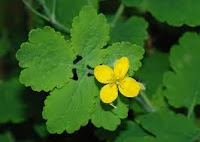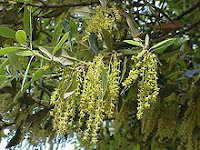Soapwort can grow to around five feet tall and has a spread of about a foot, with pinky-white flowers which bloom from July to September. These look a little like the garden flowers Sweet William which is why it is sometimes called wild Sweet William. It is a member of the Carnation family of plants; Caryophyllaceae, so is related to cloves. Like the soapnut (reetha), it produces a lather; or rather the leaves, stem and root do, when they are swished around in water. This gives rise to another name for the plant, latherwort. It is also sometimes called Fuller’s herb, and this is because it was used in the process of fulling textiles. The plant used to be used in woollen mills to gently wash newly made cloth to make it thicker, this was the fulling process. It can still be seen in Europe growing around sites of old woollen mills. It has also been used in the past to wash sheep’s wool before shearing.
 Other names for the plant include Bouncing Bet which is a curious name with dubious origins. It has been suggested that country bar-maids in
Other names for the plant include Bouncing Bet which is a curious name with dubious origins. It has been suggested that country bar-maids in As far back as the 8th century BC the Assyrians were using this plant or a similar one to wash clothes and cloth, just as the ancient people of the Indian subcontinent used the soapnut.
 Soapwort is native to
Soapwort is native to  The plant has been used in traditional medicine for a number of ailments, including for T.B., jaundice and other liver problems, as well as for syphilis. As regards the latter disease, Culpeper the 17th century herbalist states that soapwort is especially effective when mercury treatment fails.( It was customary to use mercury to cure syphilis.) However it is unwise to take any infusion or decoction of this plant internally as it irritates the digestive system. It can also destroy red blood cells and paralyze the part of the central nervous system that controls the dilation of blood vessels. It is however useful for skin problems and itching. The juice from the leaves and/or the root can be applied to the skin for acne, eczema and any other skin problem. It is said that a decoction of the root can take away discoloration from a black eye, but you have to be careful not to get any juice in your eye. It’s better to use mallow!
The plant has been used in traditional medicine for a number of ailments, including for T.B., jaundice and other liver problems, as well as for syphilis. As regards the latter disease, Culpeper the 17th century herbalist states that soapwort is especially effective when mercury treatment fails.( It was customary to use mercury to cure syphilis.) However it is unwise to take any infusion or decoction of this plant internally as it irritates the digestive system. It can also destroy red blood cells and paralyze the part of the central nervous system that controls the dilation of blood vessels. It is however useful for skin problems and itching. The juice from the leaves and/or the root can be applied to the skin for acne, eczema and any other skin problem. It is said that a decoction of the root can take away discoloration from a black eye, but you have to be careful not to get any juice in your eye. It’s better to use mallow! In clinical trials both in vitro and in animals it has been found that saporin –S6 extracted from the seeds has had some anti-cancer properties, but more research is needed.(June 2011 L Polito).




















































